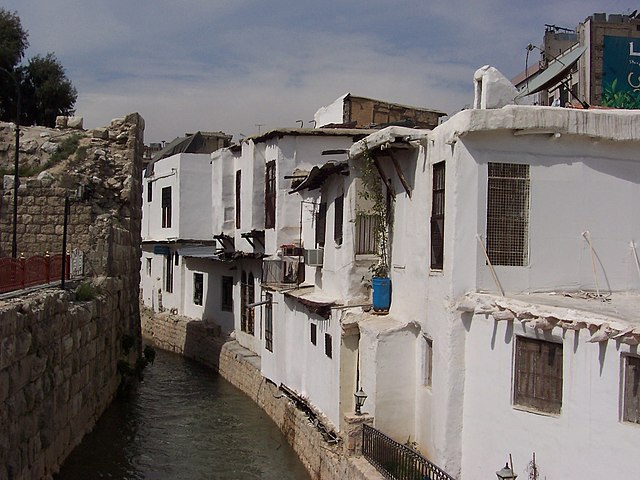Water management in Greater Damascus
Water management in Greater Damascus, a metropolitan area with more than 4 million inhabitants, is characterized by numerous challenges, including groundwater overexploitation, increasing water demand, intermittent supply, and pollution. These challenges could be exacerbated by the impact of climate change, since projections indicate that a decrease in rainfall is likely. The quality of residential water supply mirrors social divisions within the metropolitan area, with the poorest neighborhoods receiving the worst service. Irrigation in the rural parts of Greater Damascus, in particular in the Ghouta, still accounts for about 70% of water use in the metropolitan area, with the remainder being used for residential, commercial and industrial use.
A satellite view of Damascus
One of the rare periods the Barada river is high, seen here next to the Four Seasons hotel in downtown Damascus
Barada river at the end of the dry season
Lake Assad, a potential source of water supply for Damascus, pictured from space, June 1996.
The Barada is the main river of Damascus, the capital city of Syria.
Barada river in Damascus near the Four Seasons Hotel. The water level is uncharacteristically high in this view from the spring of 2009.
Barada river near the Citadel of Damascus, 2006
The upper valley of the Barada in the Anti-Lebanon Mountains 1855
Barada river 1868







